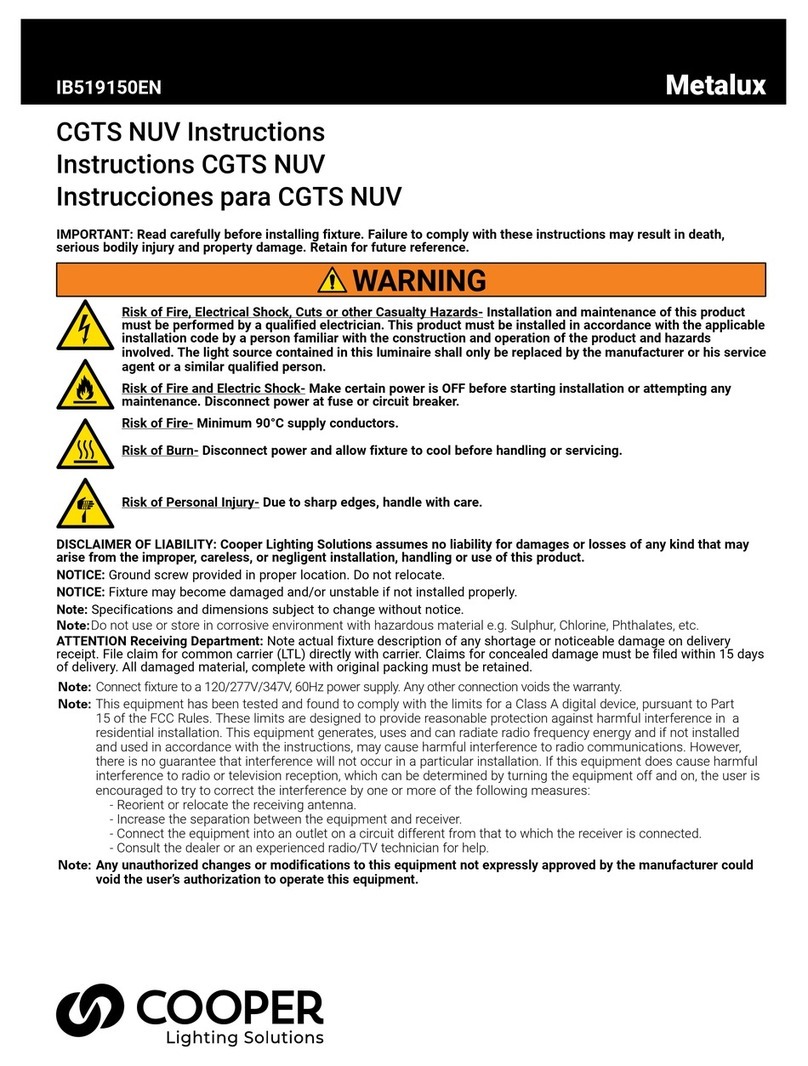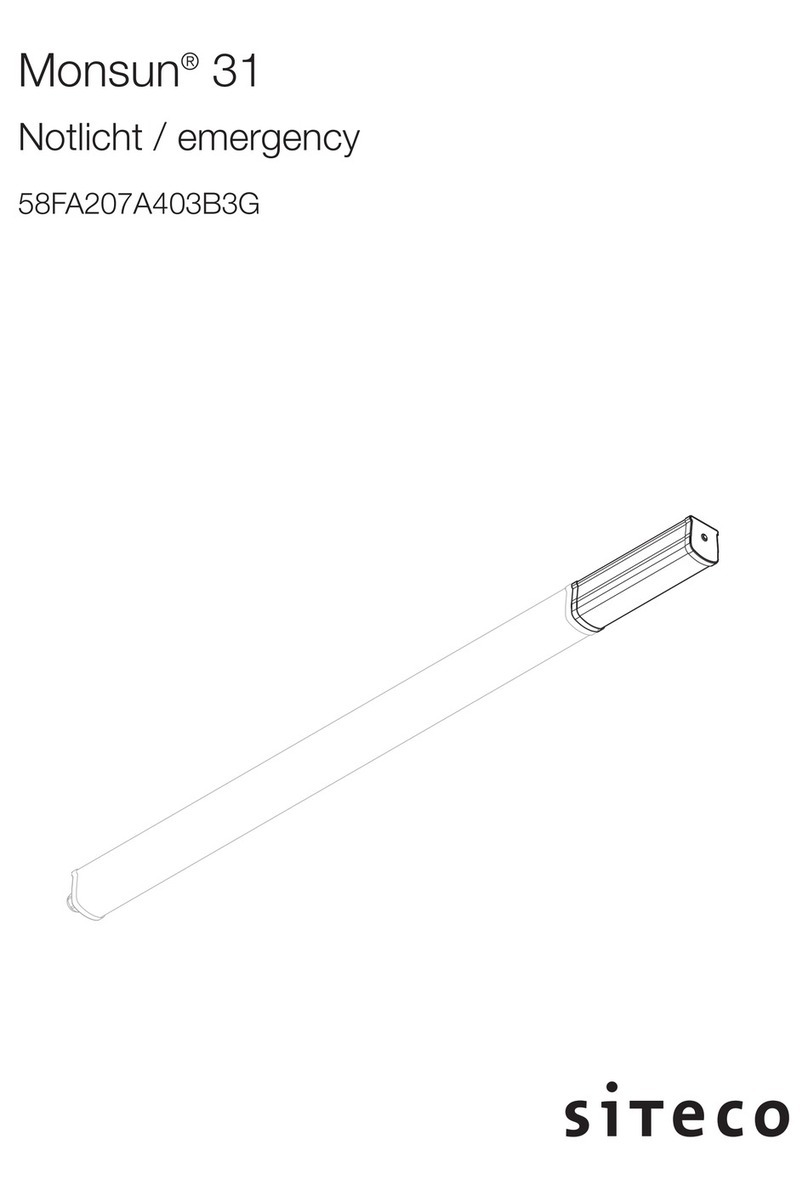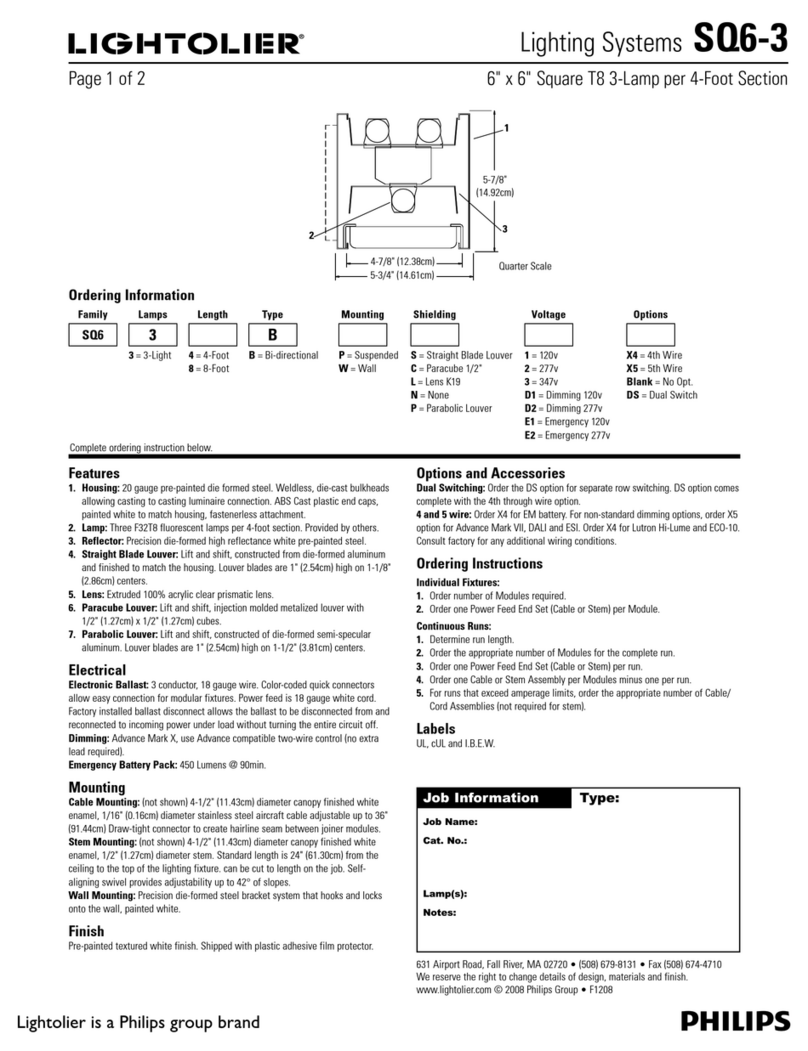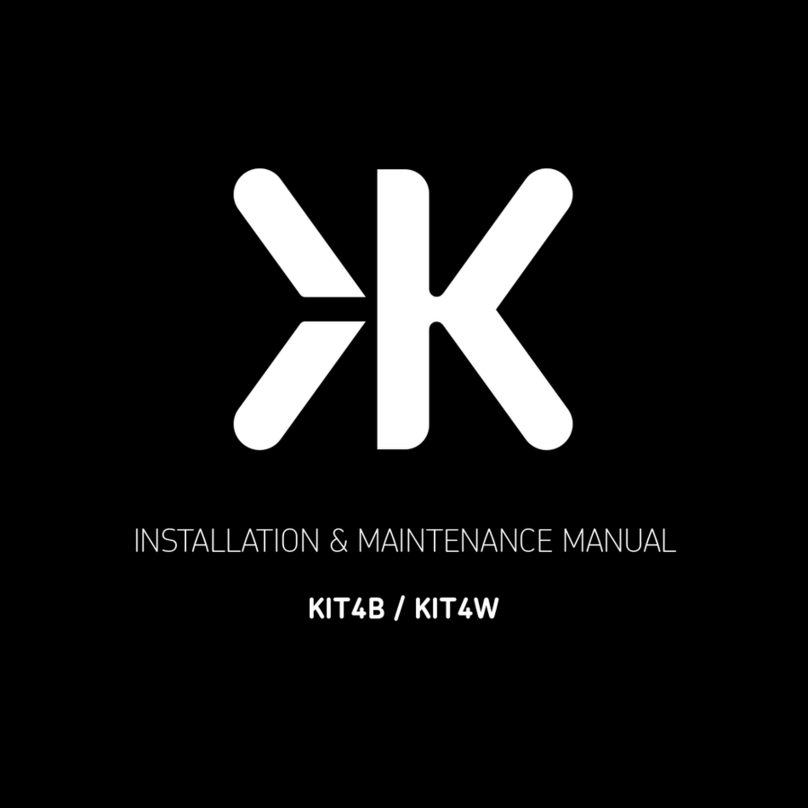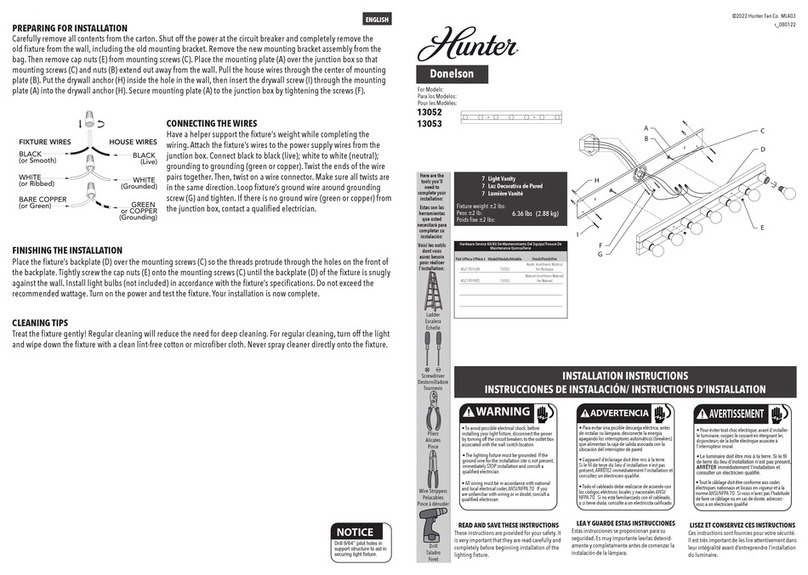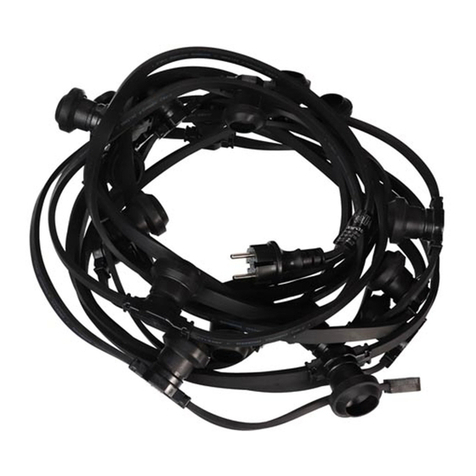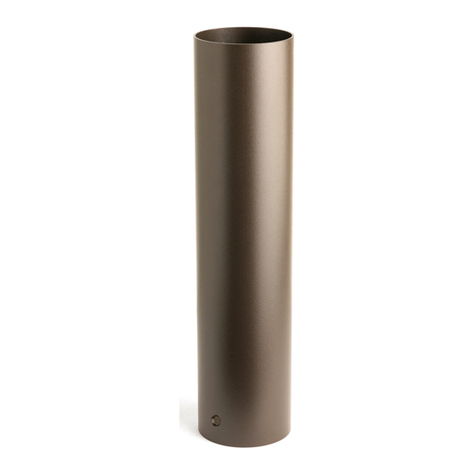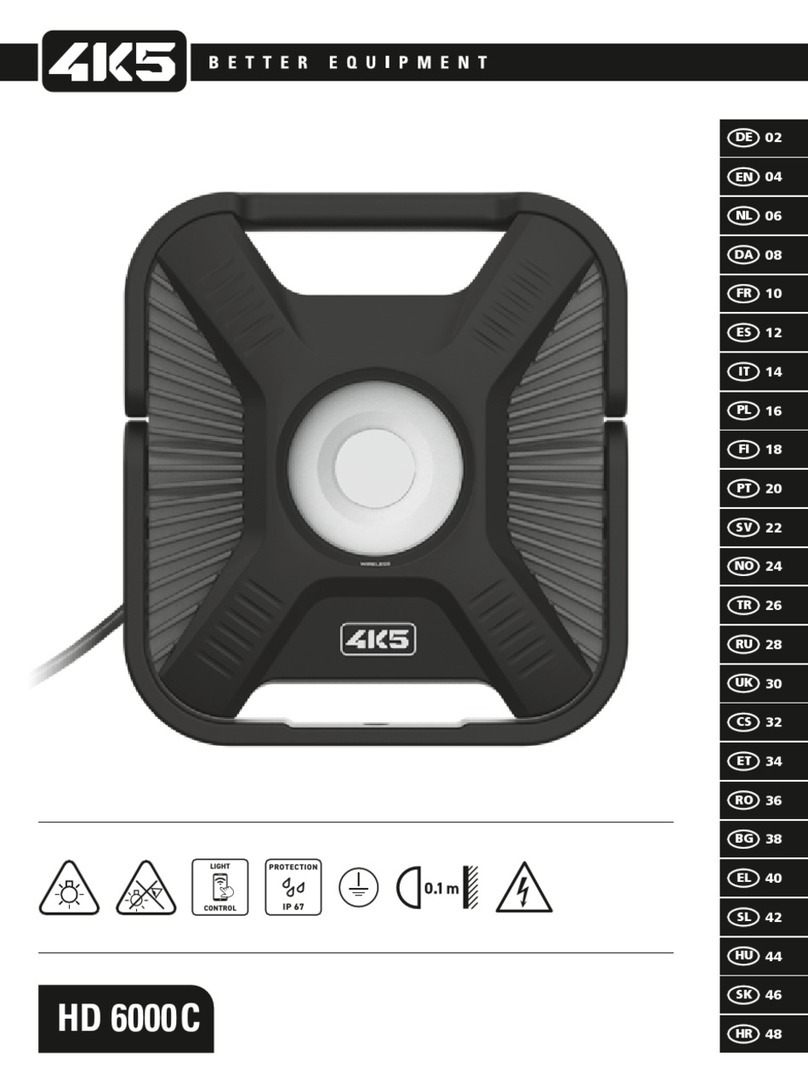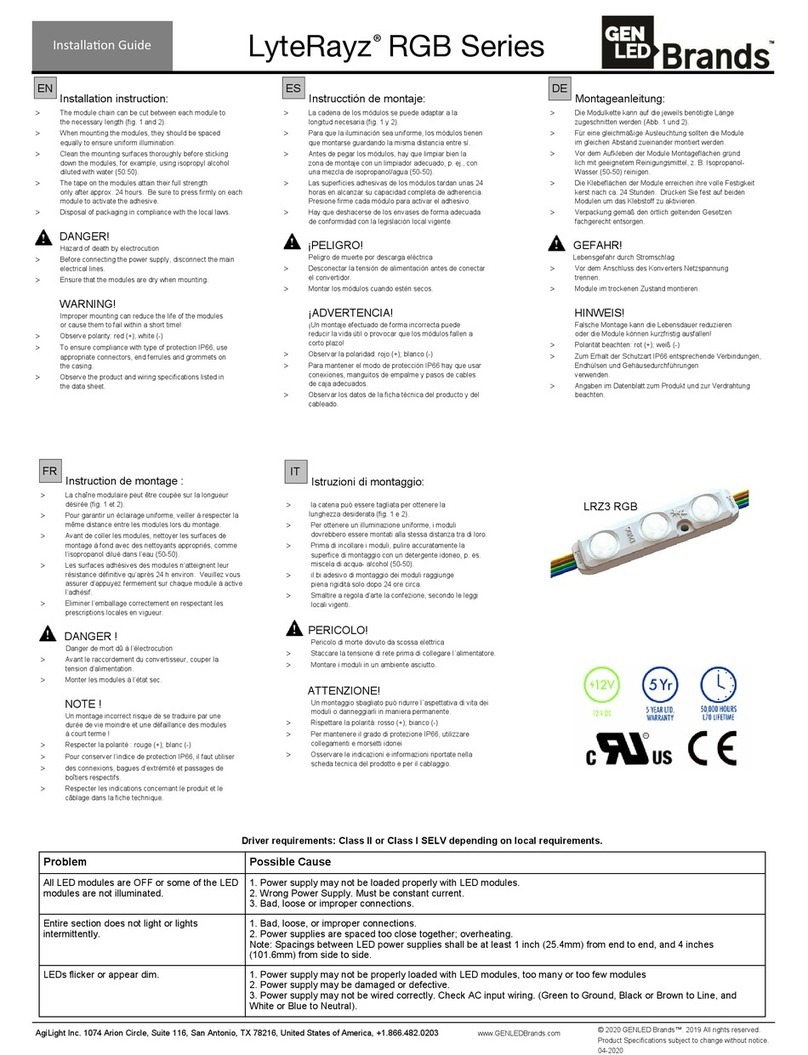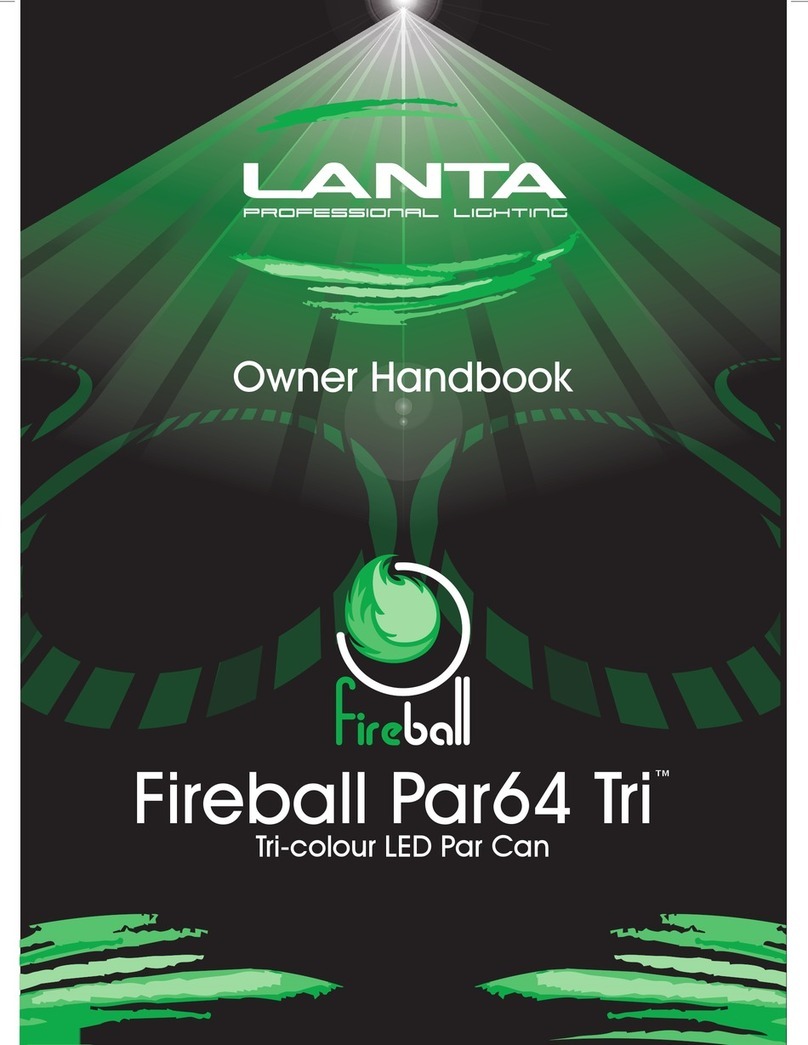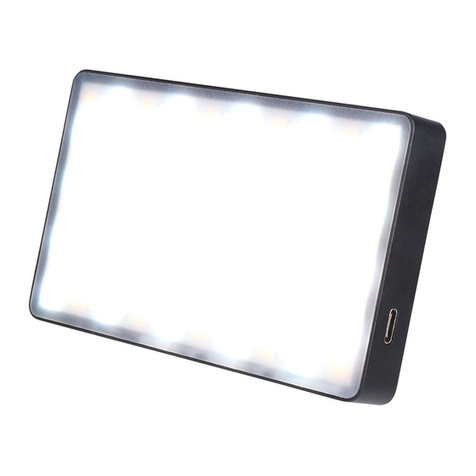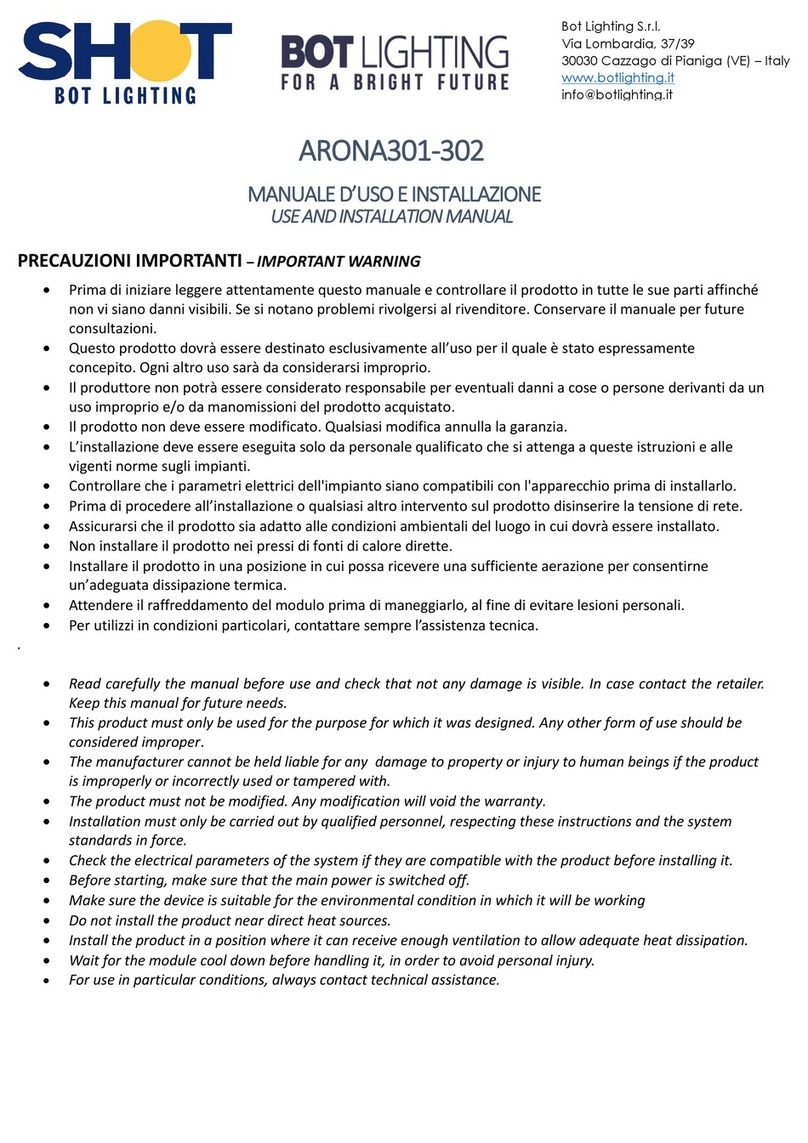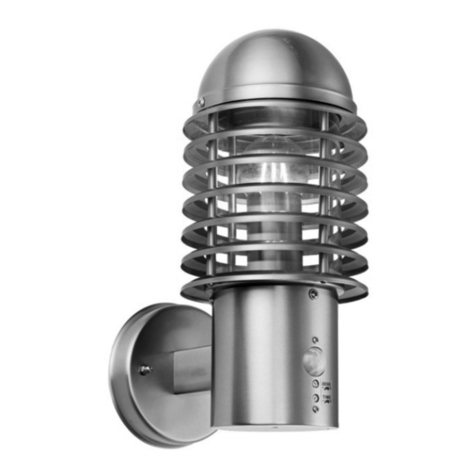REMKO SLE Series User manual

Assembly and operating instructions
Read the instructions prior to performing any task!
REMKO SLE series
SLE 20
Pool dehumidifiers
Edition GB - N11


Contents
Carefully read this operating manual prior to commissioning / using
the units!
This operating manual is a translation of the German original.
This manual is an integral part of the unit and must always be kept
in the vicinity of the installation location or on the unit itself.
Subject to modifications; no liability accepted for errors or misprints!
Air dehumidification 4-6
Safety notes 6
Unit description 7
Set-up 8
Commissioning 9
Shutdown 10
Care and maintenance 10
Troubleshooting 11
Electrical wiring diagrams 12
Diagram, cooling cycle 12
Exploded view of the condensate tank 13
Spare parts list for the condensate tank 13
Exploded view of the SLE 20 14
Spare parts list for the SLE 20 15
Maintenance protocol 16
Intended use 17
Customer service and guarantee 17
Environmental protection and recycling 17
Unit dimensions 18
Technical data 19
3

It is evident that the corrosion
rate below 50 % relative
humidity (RH) is low,
and below 40 % is negligible.
The corrosion rate increases
significantly above 60 % RH.
This threshold for damage
as the result of humidity also
applies to other materials, such
as powdery substances, packaging,
wood and electronic units.
Buildings may be dried in a variety
of ways:
1. By heating and air exchange:
The air in the room is heated
in order for moisture to
be removed and then this air
is fed outside. All of the energy
that is involved is lost together
with the moist air that is
released.
2. By air dehumidification:
The moist air that is present
within an enclosed space
is continuously dehumidified
according to the condensation
principle.
The correlations occurring when
air is dehumidified are based
on physical laws.
These are depicted here
in graphical form in order
to provide you with a brief
overview of the principles of air
dehumidification.
The use of
REMKO air dehumidifiers
– Even if windows and doors
are well insulated, water and
moisture are still capable of
penetrating thick concrete walls.
– The water required for setting
in the production of concrete,
mortar and plaster etc. may only
be diffused after 1-2 months.
– Even moisture trapped
in the masonry after high-
water or a flood is released very
slowly.
– The same is also true
of moisture contained in stored
materials for example.
The moisture (water vapour)
released from parts of a building
or materials is absorbed by
the surrounding air. As a result,
the moisture content increases,
which ultimately gives rise
to corrosion, mould, rot, peeling
of paint and other unwanted
damage.
By way of example, the diagram
shows the corrosion rate of metal
in different levels of humidity.
Air dehumidification
With regard to energy
consumption, air dehumidification
has one distinct advantage:
Energy expenditure is limited
exclusively to the air volumes
present. The mechanical heat that
is released by the dehumidification
process is fed back into the room.
Under normal use,
the
air dehumidifier
uses
approximately 25 %
of the energy that is required
for the
“heating and ventilating”
principle.
Relative air humidity
Our ambient air is a gaseous
mixture which always contains
a certain volume of water
in the form of water vapour.
This volume of water is specified
in g per kg of dry air (absolute
moisture content).
1 m3of air weighs approx. 1.2 kg
at 20 °C
Depending on the temperature,
each kg of air is only capable
of absorbing a certain volume
of water vapour. Once
this capacity has been reached,
the air is referred to as “saturated”
and has a relative humidity (RH)
of 100 %.
Relative humidity is understood
to mean the ratio between
the current quantity of water
vapour in the air and the maximum
possible quantity of water vapour
at the same temperature.
The ability of the air to absorb
water vapour increases
as the temperature rises. I.e.
the maximum possible (absolute)
water content becomes greater
as the temperature rises.
Corrosion speed
Relative humidity %
4
REMKO SLE series

The condensation
of water vapour
Because the capacity for
the maximum possible volume
of water vapour increases
as the air is heated, the volume
of water vapour contained remains
constant and so relative humidity
falls.
In contrast, because the capacity
for the maximum possible volume
of water vapour decreases
as the air is cooled, the volume
of water vapour contained remains
constant and so relative humidity
increases.
If the temperature continues to fall,
the capacity for the maximum
possible volume of water vapour
is reduced so much so that it is
ultimately equal to the volume
of water vapour contained in the air.
This temperature is referred
to as the dew point. If the air is cooled
to below the dew point, the volume
of water vapour in the air will become
greater than the maximum possible
volume of water vapour.
At this point, the water vapour
begins to precipitate.
It then condenses to water. Humidity
is then removed from the air.
Examples of condensation include
steamed-up window panes
in winter, or the moisture on
the outside of a cold drinks bottle.
As the relative humidity of the air
increases, so too does the dew
point, making it easier for
the temperature to fall below it.
Building materials and structures
are capable of absorbing
considerable volumes of water,
such as brick 90-190 l/m³, heavy
concrete 140-190 l/m³ and
limestone 180-270 l/m³.
The drying of moist materials
such as masonry is effected
as follows:
■
The moisture
moves from
the inside
of the material
to its surface
■
Evaporation occurs on
the surface = transfer of water
vapour to the ambient air
Temp. Water vapour content in g/m3at humidity of
°C 40 % 60 % 80 % 100 %
-5 1.3 1.9 2.6 3.3
+10 3.8 5.6 7.5 9.4
+15 5.1 7.7 10.2 12.8
+20 6.9 10.4 13.8 17.3
+25 9.2 13.8 18.4 23.0
+30 12.9 18.2 24.3 30.3
■
The air containing water vapour
is constantly circulated through
the REMKO air dehumidifier.
The air is dehumidified and,
slightly heated, leaves the unit in
order to re-absorb water vapour
■
In this way, the moisture
contained in the material
is reduced gradually
The material is dried!
The accumulated condensate
is collected in the unit and drained
off from there.
Verdampfer Kondensator
°C
30
25
20
15
% r.F.
100
90
80
70
60
50
40
30
20
10
+
+
-
Lufttemperatur
Luftfeuchte
Verlauf
Luftrichtung
As it flows through or over the evaporator, the air stream is cooled
to dew point. The water vapour condenses, and is collected
in a condensate trap from where it is drained off.
Drying materials
Evaporator Condenser
% RH
Humidity
Air direction
Air temperature
Course
5

Condensation heat
The Energy transferred to the air
from the condenser consists of:
1. The amount of heat derived
beforehand in the evaporator.
2. The electrical drive energy.
3. The condensation heat released
by liquefying the water vapour.
Energy must be supplied when
liquid is converted into a gas.
This energy is designated
as evaporation heat.
It does not cause any increase
in temperature, but is required
to convert a liquid into a gas.
Conversely,
energy is released
when gas is liquefied, this is
designated as condensation heat.
The amount of energy from
evaporation heat and condensation
heat is the same.
For water, this is:
2250 kJ/kg (4.18 kJ = 1kcal)
From this it is evident that
the condensation of water vapour
causes a large quantity of energy
to be released.
If the moisture that it is to
be condensed is not introduced
by evaporation in the room itself,
but from outside, e.g. through
ventilation, the condensation heat
released contributes to the heating
of the room.
When dehumidifying, a heat
cycle is created, whereby heat
is consumed for evaporation
and released for condensation.
When dehumidifying fed air,
a larger contribution of heat
is created, which manifests itself
as a temperature increase.
Generally speaking, the time
required for the drying
process is not only dependent
on theoutput of the unit, but
is determined to a greater extent
by the speed at which the material
or building section loses
its moisture.
Safety notes
The units have been subjected to
extensive material, functional and
quality inspections prior to delivery.
However, dangers can result
from the units if they are used
improperly or not as intended
by untrained personnel.
The following notes must
be observed in full:
■
The units may not be installed
or operated in explosive
environments
■
The units must not be installed
or operated in atmospheres
containing oil, sulphur or salt
■
The units must not be exposed
to direct jets of water
■
An unobstructed air inlet
and air outlet must be
guaranteed at all times
■
The air-inlet grill must always
be kept free of dirt and loose
objects
■
The units must not be covered
during operation
■
Never stick foreign objects into
the units
■
All electrical cables on
the outside of the units must
be protected against damage
(e.g. by animals etc.)
CAUTION
Work on the refrigerant
system and on the electrical
equipment must only
be conducted by a specially-
authorised specialist!
■
The units are only permitted
to be set up or installed in
the intended position (upright)
■
Unobstructed and frost-proof
condensate drainage must
be ensured
■
The unit connections must
always be established
according to the applicable
installation regulations
6
REMKO SLE series

Unit description
The units have been designed
for universal and straightforward
air dehumidification.
Their compact dimensions allow
them to be installed in many
locations.
The units operate in accordance
with the condensation principle
and are equipped with
a hermetically sealed refrigerant
system, low-noise and low-
maintenance fan and connection
cable with plug.
The fully-automated electronic
controller hot gas defrosting,
an integrated hygrostat and
connection ports for condensate
drainage provided by the customer
ensure continuous fault-free
operation.
The units are reliable and
conform to the fundamental
health and safety requirements
of the appropriate EU stipulations.
The units are used in all locations
where dry air is a must and where
economic consequential damage
(such as that caused by mould)
must be prevented.
The units may be used to
dehumidify areas such as:
■
Private swimming pools
■
Spa areas
■
Jacuzzi areas
■
Fitness centres
■
Storage rooms/archives
■
Museums
Schematic depiction of the workings of the SLE 20 air dehumidifier
Operating sequence
The operating switch and
the integrated hygrostat are
used to switch the units on and
off. The green indicator light for
“Dehumidification” at the top
of the front plate illuminates
indehumidification mode.
The fan extracts the moist room
air through the suction openings
integrated into the bottom
of the front plate.
This air is fed through a filter,
an evaporator and a condenser.
Heat is removed from the room air
on the cold evaporator. The air is
then cooled to below dew point.
The water vapour contained
in the room air is then
deposited as condensate or rime
on the evaporator pipes.
On the condenser (heat
exchanger), the cold and
dehumidified air is warmed up
again and discharged back into
the room via the side outlet blower
openings with a temperature
increase of around 5 °C above
theroom temperature.
The processed, dry air therefore
continuously mixes with the room
air.
Continuous circulation of
the room air through the unit
gradually reduces the relative
humidity (% RH) in the room to
the desired humidity level.
The hygrostat is set to 50 % RH in
the factory.
Depending on the room air
temperature and the relative
humidity, condensed water
will drip into the condensate
trap and then through
the integrated discharge nozzle
into the condensate drain to be
provided by the customer, either
continuously or only during
the defrosting phases.
Safety circuit:
If the temperature exceeds 55 °C
on the condenser (e.g. due to a fan
failure or a contaminated intake
filter), the unit stops automatically
to prevent an overload.
The unit restarts automatically
after 45 minutes.
NOTE
In normal operation,
the compressor always starts
with a delay of around
45 seconds.
Moist room air
Warmed and
dehumidified air
Warmed and
dehumidified air
7

CAUTION
A cable tie is installed
on the rear of the unit
as a transport safeguard
for the compressor.
This must be removed before
installing the unit.
Set-up
For optimum and safe use
of the units, the following notes
must be followed in full:
■
The unit must be installed
or set up in a suitable location
according to the building
conditions
■
Mount the wall console
provided securely to the wall
using suitable fastening fixtures
(not included)
■
The unit must be mounted
or set up upright to ensure
that the condensate can drain
freely
■
The unit must be mounted
or set up upright to ensure
that air can be taken in and
blown out freely
■
Observe the minimum gaps
between the unit and the ceiling
and floor to ensure optimum
unit operation
■
The unit must never be set
up in the immediate vicinity
of heaters or other sources
of heat
■
The room being dehumidified
must be closed to
the neighbouring atmosphere
■
Avoid having opened windows
and doors etc., and avoid
frequent entry to or exit from
the room as much as possible
■
In order to obtain optimum
room air circulation through
the dehumidifier, the supply
and exhaust air openings must
always remain free of dirt and
any other hindrances
Condensate water drain
The condensate water drain
is located on the unit's base.
Condensate drainage is connected
to the discharge nozzle supplied
(but not installed).
A solid or flexible ½” discharge
connector can be installed on this.
■
The discharge hose must always
be laid at an incline of at least
2 % so that the water can flow
unhindered from the drip tray
■
If drainage is to be carried out
through the wall, the relevant
measures such as holes for
correct condensate drainage
must be taken before installing
the unit
■
See the diagram below
for information on the location
of the drainage connection
Electrical wiring
■
The units are
operated with
230 V/50 Hz
alternating current
■
The electrical connection
is established via the supplied
mains cable with earthed safety
plug
■
The electrical connection may
only be established at a socket
that is suitable for the space
and unit performance
CAUTION
The unit connections must
always be established
according to the applicable
installation regulations.
CAUTION
Careful and professional
installation or assembly must
be ensured.
NOTE
A separate condensate tank
with integrated overflow
protection is available
as an accessory.
252
62
Location of the condensate discharge
NOTE
Care must be taken to ensure
that the air can enter through
the front and exit through
the sides without hindrance.
For optimum operation, we
recommend a distance of 100
mm around the unit.
8
REMKO SLE series

Additional condensate tank
In situations where natural
condensate drainage is not possible
or is very difficult, the unit can
be equipped with an additional
condensate tank.
The condensate tank is available
as an accessory.
The condensate tank is installed
directly below the unit,
see the diagram below.
If the unit is used with
a condensate tank,
the dehumidifier switches
off automatically when the tank
is full.
An LED on the front plate
illuminates red when the tank
is full and must be emptied.
The condensate tank comprises
the following parts:
■
Condensate tank housing
with magnetic switch to stop
the water and cable connection
to the board
■
Condensate collection tank
■
4 fastening screws
Unit with condensate tank
Installing the condensate tank
■
Attach the unit to the wall
bracket provided
■
After removing the 2 screws
on the top of the unit, lift
the front plate vertically
upwards and then pull away
from the unit horizontally
■
Use 4 fastening screws to screw
the condensate tank housing
underneath the unit
■
Guide the unit connection cable
through the membrane sleeve
on the base of the condensate
tank housing
Access to the controller:
The electronic controller is located
in a housing in the middle
of the unit.
The controller is accessed
by removing the 4 screws
on the sides of the housing.
■
Guide the cable for
the magnetic switch through
the membrane sleeve on
the bade of the unit and
connect to terminals 13 and 14
on the control board
■
Re-install the cover for
the controller and the unit’s
front plate
■
Insert the condensate tank into
the condensate tank housing.
Place the condensate tank so
that the float points towards
the magnetic switch
Before commissioning the unit or if
local requirements dictate, the air-
inlet grill and air-outlet grill must
be checked for contamination.
After using the operating switch
to switch on, the units work via
an integrated hygrostat that
is set to 50 % RH (standard value
for spas and indoor swimming
pools).
If the room humidity is below
50 % RH, the unit does not start.
If the relative humidity
is above 50 %, the unit starts
the dehumidification process
automatically.
The front plate must be removed
to make any required changes
to the hygrostat setting.
The hygrostat is installed below
the electronic controller.
Turn the rotary knob clockwise:
lower air humidity
, turn
it anticlockwise:
higher air humidity
.
In order to prevent damage
to the condenser, the units are
equipped with a mechanism
that prevents the compressor
being immediately switched back
on after it is switched off.
Commissioning
NOTE
A contaminated grille or filter
must be cleaned or replaced
immediately.
NOTE
Restart protection!
The compressor does not switch
back on until after a waiting
time of approx. 45 seconds!
9

Operation display LED
LED on the front panel illuminates:
Green
= Unit dehumidifying
Red = The water tank that
is inserted (accessory)
is full and must be emptied
Defrosting
If the room temperature is below
20 °C, the evaporator will start
to ice up after a short time.
If the evaporator probe registers
a temperature of less than 5 °C
on the evaporator surface,
the unit only continues to
run in dehumidification mode for
a further 44 minutes.
After this time has elapsed, the fan
stops and a hot gas injector is used
to defrost the evaporator surface.
When the evaporator probe
registers a temperature higher
than 5 ºC, the fan switches on
again and dehumidification mode
starts again.
■
Move the operating switch
to the ”0” (off) position
■
If the units are inactive for long
periods, disconnect them from
the mains power supply
■
If installed, the condensate tank
must be emptied and rinsed
with clean water
Beware of dripping condensate!
Shutdown
■
Observe the regular care
and maintenance intervals
■
In accordance with
the operating conditions,
the units must, if necessary,
be checked at least yearly
by a specialist to ensure that
they are in a condition that
is safe to use
■
Keep the units free of dust and
other debris
■
If the unit is contaminated,
use suitable agents to clean
it carefully and thoroughly
■
If the evaporator’s pipes are
heavily soiled, they can be
cleaned carefully with soapy
water
■
Never subject to direct jets
of water
e.g. pressure washers etc.
■
Never use abrasive or solvent-
based cleaners
■
Use only suitable cleaners, even
for heavy contamination
Care and maintenance
All moving parts have a low-
maintenance permanent coat
of lubricant. The refrigerant system
is designed as a hermetically sealed
system and may only be repaired
by a specialist.
NOTE
Regular care and maintenance
is fundamental to a long
service life and fault-free
operation of the unit.
Cleaning the suction filter
Check the suction filter at regular
intervals and clean if necessary.
The filter is secured in a bracket
behind the intake openings.
■
Light filter contamination
can be remedied with careful
blowing or suction
■
Heavier contamination may
be remedied by rinsing the filter
in a lukewarm (max. 40 °C)
soap solution. Finally, always
rinse the filter carefully with
clear water and allow to dry
■
Before refitting the filter, ensure
that its fully dry and that no
damage has been sustained
■
The units may only be operated
with the filter in place
Cleaning the condensate
water collection tray
To ensure that the condensate
water that accumulates can always
drain freely, the collection tray for
the condensate and the drain must
be cleaned regularly.
NOTE
Heavily contaminated filters
must be replaced with new
parts.
Only original replacement
parts may be used.
CAUTION
Check the intake
and
outlet
openings, as well as filters,
regularly for contamination.
10
REMKO SLE series

Troubleshooting
The units are manufactured
using state-of-the-art production
methods and tested several times
to verify their correct function.
However, if a functional fault
should occur, the unit should
first be checked in accordance
with the following list.
The unit does not start
■
Check the setting
of the operating switch
■
Check the power supply
and the power fuse
provided by the customer
-230V/1~/50 Hz-
■
Check the power plug and
the cable for damage
■
If a condensate tank is installed,
check how full it is and that it
is positioned correctly
■
Check the integrated hygrostat.
Set the hygrostat to a lower
relative humidity level (turn
the adjustment knob on the far
right).
If the unit does not start up,
check the integrated hygrostat
for faults
The unit switches off
automatically, does not restart
for 45 minutes and switches
off again after a short time
■
Does the fan run when the unit
restarts after 45 minutes?
■
Is the condenser surface
contaminated?
■
Is the suction filter
contaminated?
■
Is the ambient temperature over
30 °C?
■
Are the intake and outlet
openings clear?
The unit runs but does
not form any condensate
■
Check the room temperature.
The operating range of the unit
is between 3 °C and 30 °C
■
Check the air humidity, at least
40 % RH is required
■
Check the suction filter
for contamination and clean
or replace if necessary
■
Check the evaporator and
condenser for contamination
and clean if necessary
■
Check the evaporator for ice
or rime formation.
If ice has formed, check
the functionality of
the automatic defrost and
the temperature sensor
The condensate tank is full
but the unit does not switch
off automatically
■
Check whether the condensate
tank is installed correctly
in the housing and whether
the float is positioned towards
the magnetic switch
■
Check whether the water tank’s
float can move freely or whether
it is damaged
CAUTION
Work on the refrigerant
system and on the electrical
equipment must only be
conducted by a specially-
authorised specialist!
The red indicator light
(malfunction) also illuminates
if the condensate tank
is empty
■
Check whether the water tank’s
float can move freely or whether
it is damaged
NOTE
If the unit fails to function
correctly after the checks have
been carried out, contact
an authorised specialist.
NOTE
A contaminated grille or filter
must be cleaned or replaced
immediately.
11

Electrical wiring diagram
Cooling cycle
5
FAN MAINSCOMPR.VALVE HOUR
COUNTER
M
1~
M
1~
COND.
NTC
EVAP.
NTC
HYGWATER
SW
TS1 TS2
S1
HYG Y1
M1M2
Electronic control board
Legend:
HYG = Hygrostat (internal)
M1 = Compressor
M2 = Fan
S1 = Operating switch
TS1 = Condenser probe
TS2 = Evaporator probe
Y1 = Solenoid valve
Legend:
1. Compressor
2. Evaporator
3. Condenser
4. Capillary tube
5. Dry filter
6. Solenoid valve
7. Fan
7
3
4
6
2
1
We reserve the right to modify the dimensions and design as part of the ongoing technical development process.
12
REMKO SLE series

We reserve the right to modify the dimensions and design as part of the ongoing technical development process.
Condensate tank (accessory)
Spare parts list
No. Designation EDP
1 Housing 1109131
2 Bracket for magnetic switch 1109132
3 Magnetic switch 1109133
4 Stop rail 1109134
5 Condensate tank bracket 1109135
6 Complete housing base 1109136
7 Float 1109139
8 Condensate container cpl. 1109140
9 Front panel 1109142
2
1
3
4
5
6
8
9
7
Additional condensate tank
In situations where natural
condensate drainage is not
possible or is very difficult, the unit
can be equipped with an additional
condensate tank.
The condensate tank is installed
directly below the unit.
If the unit is used with
a condensate tank,
the dehumidifier switches off
automatically when the tank is full.
An LED on the front plate
illuminates red when the tank
is full and must be emptied.
NOTE
The condensate tank has
a capacity of 6 litres.
The automatic shut-down
occurs when the level reaches
5 litres.
13

We reserve the right to modify the dimensions and design as part of the ongoing technical development process.
Exploded view of the SLE 20
21
10
12
13
15
2
1
23
19
2425
26
3
9
28
6
8
4
14
27
22
16
17
14
REMKO SLE series

Spare parts list
No. Designation EDP
1 Wall-mounted bracket 1109100
2 Complete housing 1109101
3 Compressor, cpl. 1109102
4 Complete start relay 1109103
6 Operating switch 1109113
8 Fan motor 1109105
9 Fan blade 1109106
12 Control board 1109107
13 LED board 1109108
14 Electronics cover 1109109
15 Solenoid valve, cpl. 1109110
16 NTC condenser probe 1109112
17 NTC evaporator probe (metal) 1109111
19 Mains cable with plug 1109124
21 Condenser 1109114
22 Evaporator 1109121
23 Complete condensate tray 1109122
24 Suction filter 1109127
25 Front plate 1109126
26 Complete hygrostat 1109115
27 Dry filter 1109119
28 Capillary tube 1109120
When ordering replacement parts, please always state the EDP no. and unit number (see name plate)! 15

Maintenance protocol ✍
1. Date: ..............
..............................
Signature
2. Date: ..............
..............................
Signature
3. Date: ..............
..............................
Signature
4. Date: ..............
..............................
Signature
5. Date: ..............
..............................
Signature
6. Date: ..............
..............................
Signature
7. Date: ..............
..............................
Signature
8. Date: ..............
..............................
Signature
9. Date: ..............
..............................
Signature
10. Date: ............
..............................
Signature
11. Date: ............
..............................
Signature
12. Date: ............
..............................
Signature
13. Date: ............
..............................
Signature
14. Date: ............
..............................
Signature
15. Date: ............
..............................
Signature
16. Date: ............
..............................
Signature
17. Date: ............
..............................
Signature
18. Date: ............
..............................
Signature
19. Date: ............
..............................
Signature
20. Date: ............
..............................
Signature
Comments: ..........................................................................................................................................................
.............................................................................................................................................................................
.............................................................................................................................................................................
.............................................................................................................................................................................
.............................................................................................................................................................................
Unit type: .................................. Unit number: ...................................
1 2 3 4 5 6 7 8 9 10 11 12 13 14 15 16 17 18 19 20
Unit cleaned - outside -
Unit cleaned - inside -
Condenser cleaned
Evaporator cleaned
Fan function checked
Unit checked for damage
Safety devices checked
All fastening screws checked
Electrical safety check
Test run
Unit to be maintained only by authorised specialists in accordance with the statutory regulations.
16
REMKO SLE series

Customer service and
guarantee
As a prerequisite for any guarantee
claims to be considered, it
is essential that the ordering party
or their representative complete
and return the ”Certificate of
guarantee” to REMKO GmbH &
Co. KG at the time when the units
are purchased and commissioned.
The units were tested
at the factory
several times to verify their correct
function.
However, if malfunctions should
arise that cannot be remedied
by the operator with the assistance
of the troubleshooting section,
please contact your specialist
dealer or contractual partner.
Intended use Environmental
protection
and recycling
Disposal of packaging
When disposing of packaging
material, please consider our
environment.
Our units are carefully packed
and delivered in stable transport
packaging and, if applicable,
on a wooden pallet.
The packaging materials are
environmentally-friendly and can
be recycled.
By recycling packaging materials,
you make a valuable contribution
to the reduction of waste and
conservation of raw materials.
Therefore, only dispose of
packaging material at appropriate
collection points.
Disposal of the old unit
The manufacturing process for
the units is subject to continuous
quality control.
Only high-grade materials are
processed, the majority of which
are recyclable.
You also contribute to
environmental protection
by ensuring that your old
equipment is only disposed of
in an environment friendly manner.
Therefore, only bring the old
unit to an authorised recycling
business or to an appropriate
collection point
.
NOTE
Operation other than the types
listed in this operating manual
is prohibited.
With non-observance,
any manufacturer liability
or guarantee claims are voided.
NOTE
Setting and maintenance
work may only be carried out
by authorised and qualified
technicians.
Important information
concerning recycling
The units are operated with
environmentally-friendly and
ozone-neutral R134A refrigerant.
The mixture of refrigerant and oil
within the unit must be disposed
of properly in accordance with
the statutory or locally-applicable
regulations.
The units are designed exclusively
for dehumidification purposes on
the basis of their structural design
and equipment.
A failure to observe the
manufacturer's specifications, the
respective local legal requirements
or arbitrary alterations to the units,
exempts the manufacturer from
liability for resulting damage.
CAUTION
Copyright
The redistribution, even
in part, or the use of this
documentation for purposes
other than intended is strictly
prohibited without the written
authorisation of
REMKO
GmbH & Co. KG
.
17

We reserve the right to modify the dimensions and design as part of the ongoing technical development process.
Unit dimensions
All measurements in mm
600
535
240
580
485
160
833
600
160
485
815
580
240
535
SLE 20 standard SLE 20 with condensate tank
18
REMKO SLE series

Series SLE 20
Daily dehumidification capacity at 30 °C and 80 % RH Litres/day 10.5
Daily dehumidification capacity at 30 °C and 60% RH Litres/day 7.5
Operational temperature range °C 3-30
Usable humidity range % RH 40-100
Air volume m3/h 220
Refrigerant 1) R134a
Refrigerant quantity g 190
Power supply V/Hz 230/1~/50
Max. rated current consumption A 2.1
Max. power consumption kW 0.39
Sound pressure level LpA 1m 2) dB (A) 46
Depth mm 240
Width mm 535
Height mm 600
Weight kg 28
EDP 615200
Technical data
1) Contains greenhouse gas according to Kyoto protocol
2) Noise level measurement DIN 45635 - 13 - KL 3
0
5
10
15
20
25
30
35
0 0,05 0,1 0,15 0,2 0,25 0,3 0,35 0,4 0,45 0,5
40% r.F.
60% r.F.
80% r.F.
A
B
C
ABC
Capacity diagram
Room temperature [°C]
Dehumidification capacity [l/h]
19

Consulting
Thanks to intensive training,
our consultants are always
completely up-to-date when
it comes to technical expertise.
This has given us the reputation
of being more than just
an excellent, reliable supplier:
REMKO, a partner who
helps to solve problems.
Sales
REMKO offers not just a well
established sales network both
nationally and internationally,
but also has exceptionally highly-
qualified sales specialists.
REMKO employees in the field
are more than just sales
people: above all, they must
be advisers to our customers
in air conditioning and heating
technology.
Customer service
Our units operate precisely
and reliably. However,
in the event of a malfunction
REMKO customer service
is quickly on the scene. Our
extensive network of experienced
dealers guarantees quick and
reliable service.
REMKO INTERNATIONAL
... and also right in your neighbourhood!
Take advantage of our experience and advice
REMKO GmbH & Co. KG
Air conditioning and heating technology
Im Seelenkamp 12 D-32791 Lage
Postfach 1827 D-32777 Lage
Telephone +49 5232 606-0
Fax +49 5232 606-260
E-mail [email protected]
Internet www.remko.de
We reserve the right to make technical changes and provide no warranty as to the accuracy of this data!
Other manuals for SLE Series
1
This manual suits for next models
1
Table of contents
